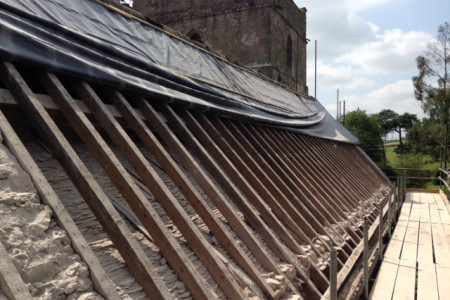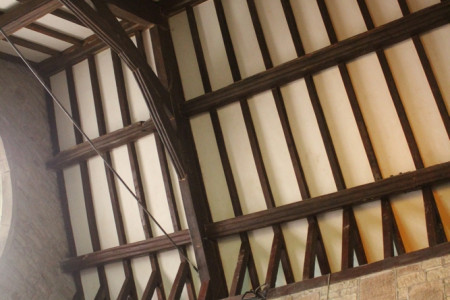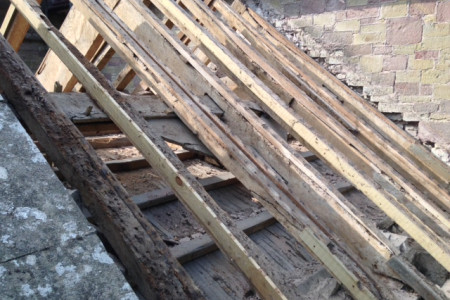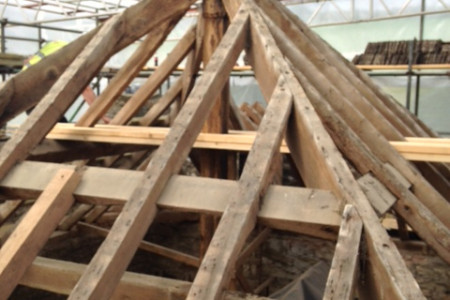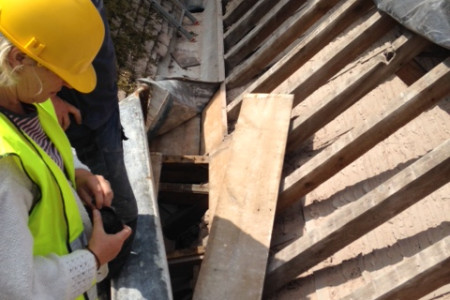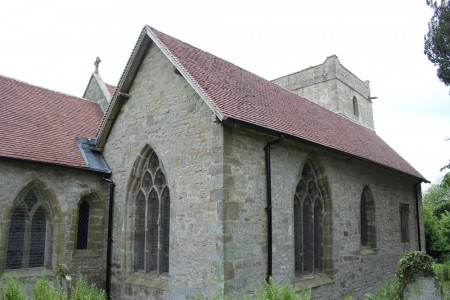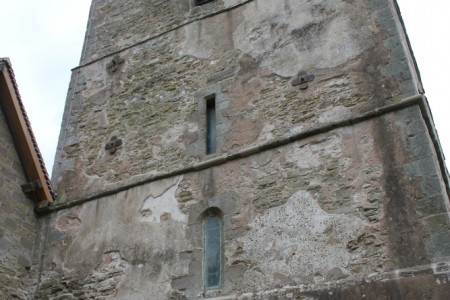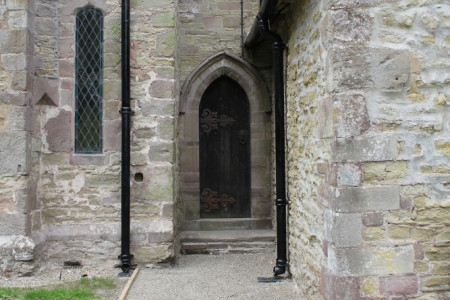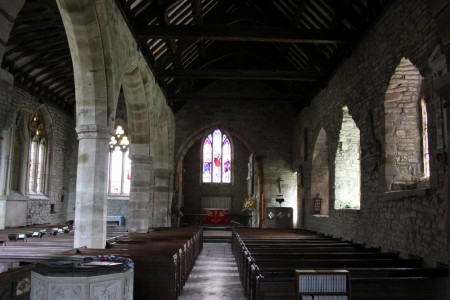St. Michael's Church in Munslow, sits nestled in the Shropshire hills quite hidden away from the rest of the village. It is largely 12th and 13th century in origin, with some later additions and some inevitable Victorian reordering after that. A hundred and fifty years on, the church had largely been left untouched and the quinquennial inspection reports became increasingly concerned for the survival of the church building.
Fortunately, the PCC decided to grasp the nettle and began applying for a variety of grants as well as fundraising for themselves. The most recent quinquennial by Conservation Architect Lesley Lloyd revealed some very serious problems with the roofs, several slopes of which were beginning to fall off in huge sections. Plaster falls from the water-damaged ceilings made for several very near misses for the congregation and visitors, and falling masonry from the tower at the west and structural movement in the chancel at the east all combined to sound an ominous death knell for the church.
Recclesia were contracted to carry out the extensive conservation and remedial work to the church following the award of several grants alongside successful local fund-raising. The final scope of roofing works included the re-covering of the entire church using new hand-made tiles, extensive structural joinery repairs to roof timbers, the complete rebuilding of the tower roof, new leadwork to parapet and valley gutters and the finishing of the ceilings using oak laths and haired lime putty.
The structural movement at the east end was addressed using CINTEC anchors combined with a matrix of helifix rods to knit the east elevation back together again. The failing masonry to the tower was addressed alongside the conservation of the remaining render left on the elevations, which was slowly gravity-fed with with lime grout to re-adhere large sections back to the rubble walls beneath, and the exposed edges dressed using lime mortar to help it handle the weather more successfully and thereby prolong its life.
The works also included the installation of French and rainwater drains under archaeological watch, running to new soakaways in the churchyard, and the replacement of all of the cast iron rainwater goods with new.
The work received wide praise on completion for its light touch, sensitivity and very high standard of workmanship.

